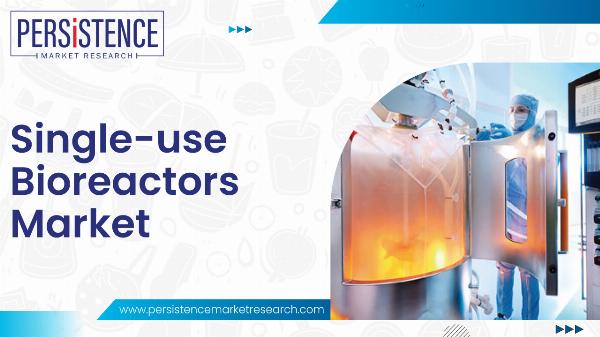What are the Factors Driving the Single-Use Bioreactors Market?

Strong 8k brings an ultra-HD IPTV experience to your living room and your pocket.
The single-use bioreactors (SUBs) market has experienced significant growth over the past decade, driven by several key factors that have contributed to the widespread adoption of these systems in the biopharmaceutical industry. These factors include the increasing demand for flexible and cost-effective manufacturing solutions, the rising prevalence of chronic diseases, advancements in single-use technologies, and the impact of the COVID-19 pandemic.
One of the primary drivers of the single-use bioreactors market is the growing demand for flexible and cost-effective manufacturing solutions. Traditional stainless steel bioreactors require extensive capital investment, as well as time-consuming and costly cleaning and sterilization processes between production cycles. In contrast, single-use bioreactors offer significant cost savings by eliminating the need for cleaning and sterilization, reducing labor costs, and minimizing the risk of cross-contamination. These benefits have made SUBs an attractive option for biopharmaceutical companies looking to streamline their manufacturing processes and reduce production costs.
The flexibility offered by single-use bioreactors is another critical factor driving market growth. Traditional bioreactors are often rigid and difficult to scale, making them less suitable for the production of small-batch, high-value biopharmaceuticals. In contrast, SUBs can be easily scaled up or down to meet changing production demands, making them ideal for both clinical and commercial bioprocessing. This flexibility is particularly important in the production of biologics, vaccines, and cell-based therapies, where the ability to quickly adapt to changing market conditions can provide a significant competitive advantage.
However, the market also faces some challenges that could impact its growth. One of the primary concerns is the issue of leachable and extractable materials in single-use systems. These materials, which can leach into the drug substance during processing, have raised questions about product safety and regulatory compliance. The lack of well-established regulations governing the use of these materials has led to some uncertainty within the industry, which could hinder market growth.
Another challenge is the environmental impact of single-use bioreactors, particularly in terms of waste disposal. The disposable nature of SUBs means that large quantities of plastic waste are generated with each production cycle, raising concerns about the sustainability of these systems. While some companies are exploring more sustainable waste disposal options, such as recycling and energy recovery, the environmental impact of single-use systems remains a significant challenge that the industry must address.
The rising prevalence of chronic diseases is also contributing to the growth of the single-use bioreactors market. Chronic diseases, such as diabetes, cardiovascular diseases, and cancer, are major contributors to global mortality and disability. The production of biologics and other biopharmaceuticals to treat these diseases requires scalable and efficient manufacturing solutions, which single-use bioreactors are well-suited to provide. As the global burden of chronic diseases continues to rise, the demand for biopharmaceutical products is expected to increase, driving further growth in the single-use bioreactors market.
The competitive landscape of the single-use bioreactors market is characterized by continuous innovation and strategic partnerships. Companies are increasingly focusing on developing new and advanced single-use technologies that cater to the evolving needs of the biopharmaceutical industry. For example, in March 2021, Thermo Scientific introduced the 3,000 L and 5,000 L models of HyPerforma DynaDrive single-use bioreactors, which are designed to support large-scale bioprocesses, including cGMP manufacturing at high cell densities. This strategic product launch has enhanced the company's product portfolio and expanded its overall customer base.
In September 2019, ABEC Inc. unveiled a single-use bioreactor system featuring an impressive working volume of 6,000 L, tripling the industry standard maximum limit. This release marked a significant advancement from the company's previous threshold set in 2017, which stood at a total production volume capability of 4,900 L. ABEC's strategic move to enhance cell culture capacity per unit of floor space through the CSR bioreactors is anticipated to yield substantial savings in facility space, capital expenditures, and disposable costs in the future.
Key Companies Profiled
• Applikon Biotechnology BV
• Cellexus Ltd.
• Celltainer Biotech B.V.
• Cesco Bioengineering Co. Ltd.
• Danaher Corporation
• ABEC, INC.
• Distek, Inc.
• Eppendorf SE
• Thermo Fischer Scientific
• Pall Corporation
• Sartorius AG
• Merck KGaA
• GE Healthcare
• Pierre Guerin
Single-use Bioreactors Market Research Segmentation
By Product:
• Single-use Bioreactor Systems
• Single-use Media Bags
• Single-use Filtration Assemblies
• Others
By Type:
• Stirred-tank SUB
• Wave-induced Motion
• Bubble Column
• Others
By End-Use:
• CROs & CMOs
• Academic & Research Institutes
• Biopharma & Pharma Companies
By Region:
• North America
• Europe
• East Asia
• South Asia & Oceania
• Latin America
• Middle East & Africa
Note: IndiBlogHub features both user-submitted and editorial content. We do not verify third-party contributions. Read our Disclaimer and Privacy Policyfor details.


